People
Dutch Designer Maarten Baas on His Fascination With Time, Acquiring His First Banksy, and Making Handbag-Eating Monsters
Baas has a new show of imaginative clocks at Carpenters Workshop Gallery in Los Angeles.
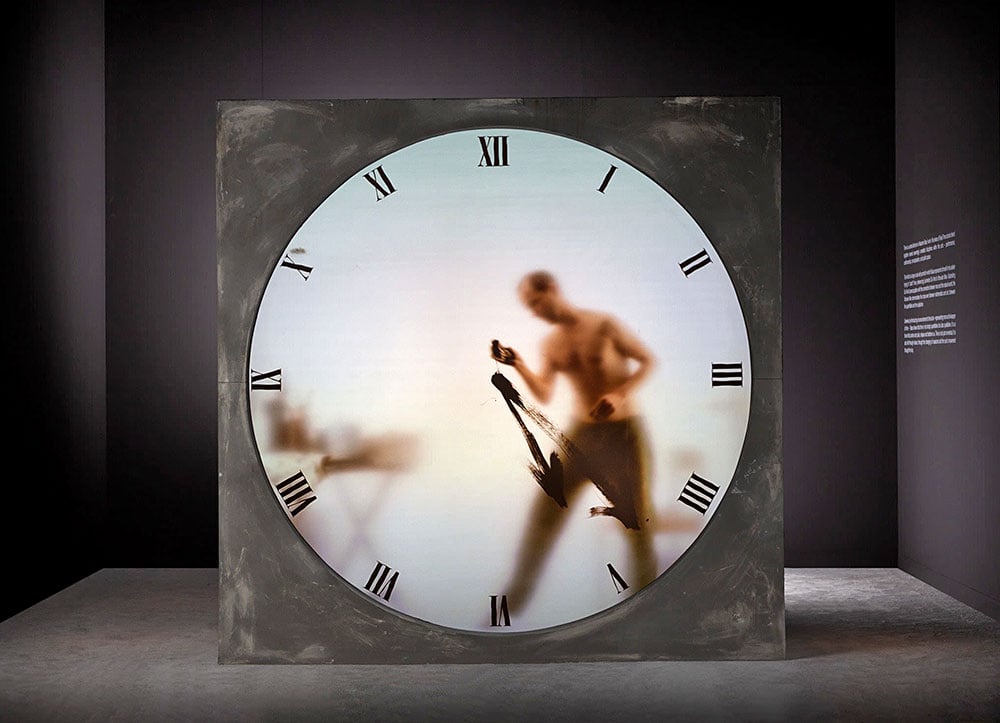
Baas has a new show of imaginative clocks at Carpenters Workshop Gallery in Los Angeles.

Lee Carter

Maarten Baas is enthralled by time: pausing it, fast-forwarding it, drawing it, performing it. The conceptualization of time has been his modus operandi since 2009, when the Dutch designer exhibited his smash-hit “Real Time” at Salone del Mobile in Milan and earned the title Designer of the Year from Design Basel in Miami.
Ever since, Baas has been crafting horological works out of the fourth dimension; and naturally, he has a lot of clocks to show for it. Sweepers Clock (2010) is a 12-hour video in which two men busily sweep piles of trash resembling the hands of a clock, treating time as a performative process. Those wondering who the enigmatic figure painting each passing minute from the inside of Schiphol Clock (2016) in Amsterdam’s bustling airport—it was Baas.
In 2017, Baas opened his first major museum show, “Hide & Seek,” at the Groninger Museum in the Netherlands. Meanwhile, his pieces have been scooped up by institutions all over the world, from MoMA in New York and San Francisco MoMA to the Victoria & Albert Museum in London and the Rijksmuseum, Amsterdam. Two grandfather clocks of his—or rather, one grandmother clock—have fetched his highest auction amounts, at Sotheby’s (2019) and Phillips (2012).
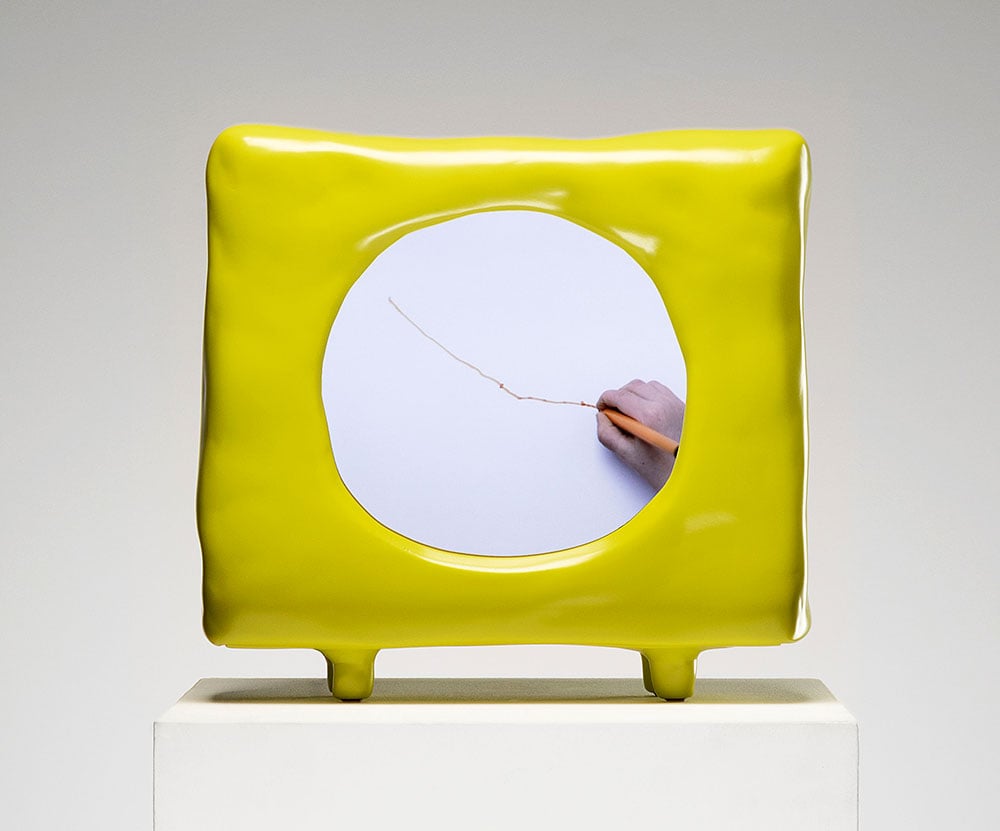
Maarten Baas, Children’s Clock (2022). Courtesy of Carpenters Workshop Gallery.
Now, Baas is exhibiting “Play Time” at Carpenters Workshop Gallery, Los Angeles (through May 26), a time-traveling retrospective of earlier time-based works mixed with new iterations. In his “720 Minutes Clocks” series, Baas gathered as many Dutch children to create a colorful drawing on a clock’s face. In Real Time XL The Artist, Baas stands inside a giant clock, hand-drawing and redrawing its hands.
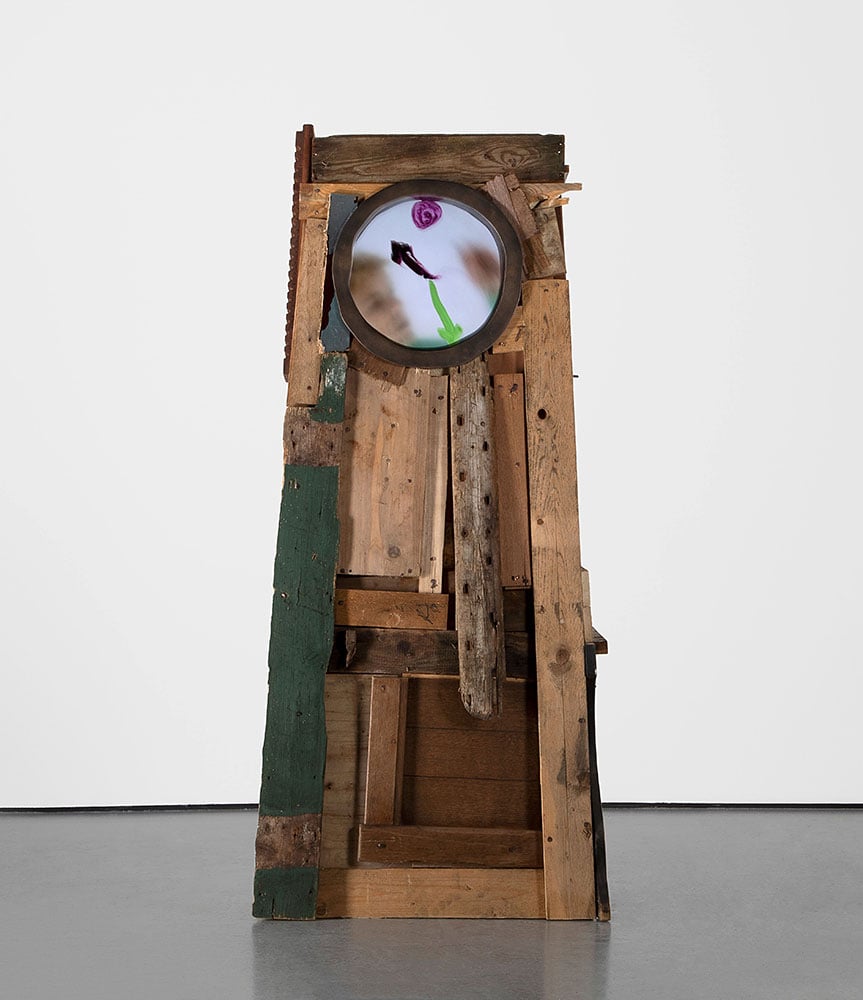
Maarten Baas, Grandfather Clock The Son (2022). Courtesy of Carpenters Workshop Gallery.
More of his grandfather clocks appear, too, in plank wood—like that of a treehouse—with Baas as a child behind the transparent clock face, updating the hands minute by minute in bright paint strokes. Elsewhere, Baas experimented with furniture by casting large naive-style bronze cabinets into surrealist, cartoonish shapes.
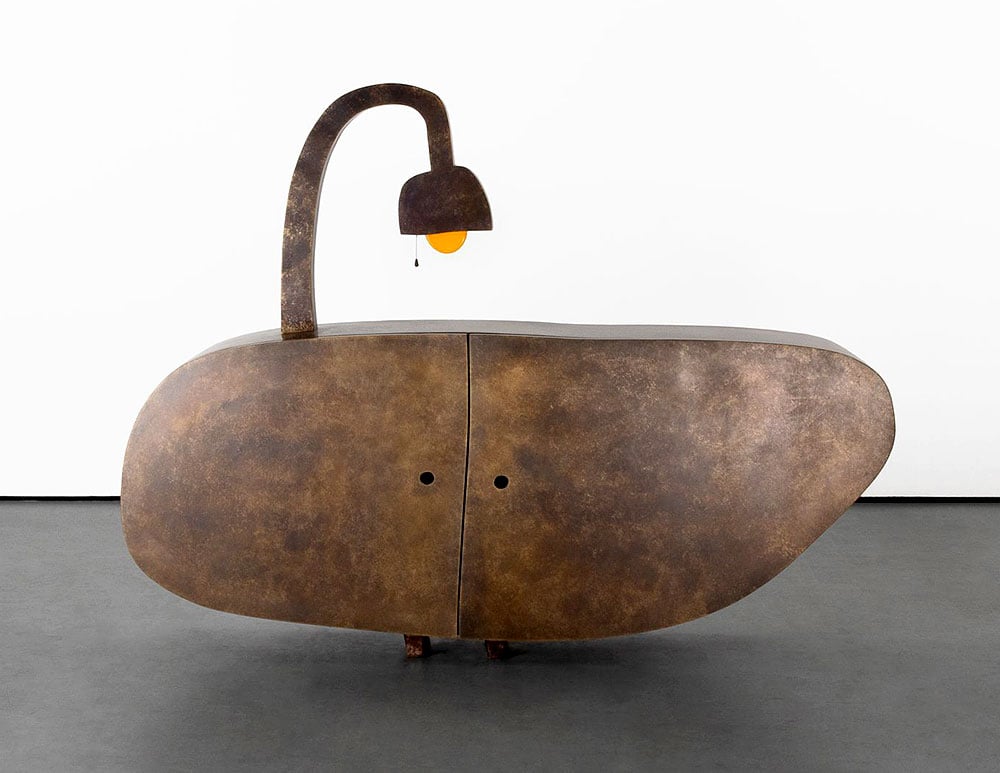
Maarten Baas, Close Parity Cabinet With Light (2018). Courtesy of Carpenters Workshop Gallery.
The Peter-Pan like figure exists somewhere between childhood and adulthood, space and time, art and design. We stole a few minutes of his time for his take on Los Angeles, his inner clock, and collecting art.
What’s the origin of your fascination with clocks and time. And would you say you are a punctual person?
Originally, the idea of “Real Time” was to visualize the fact that time is not something concrete. We try to measure time in very concrete numbers, like a minute, an hour. But actually, it’s so abstract and every minute is a new experience. And every minute is different; everybody is seeing it in a different way. In “Real Time,” I tried to visualize it in such a way that every minute is a man-made product, actually a man-made memory.
To your question whether I’m a punctual person—totally, I am. I’m in the category of people who are always on time. I have a kind of inner clock always ticking in myself. I always know what time it is more or less.
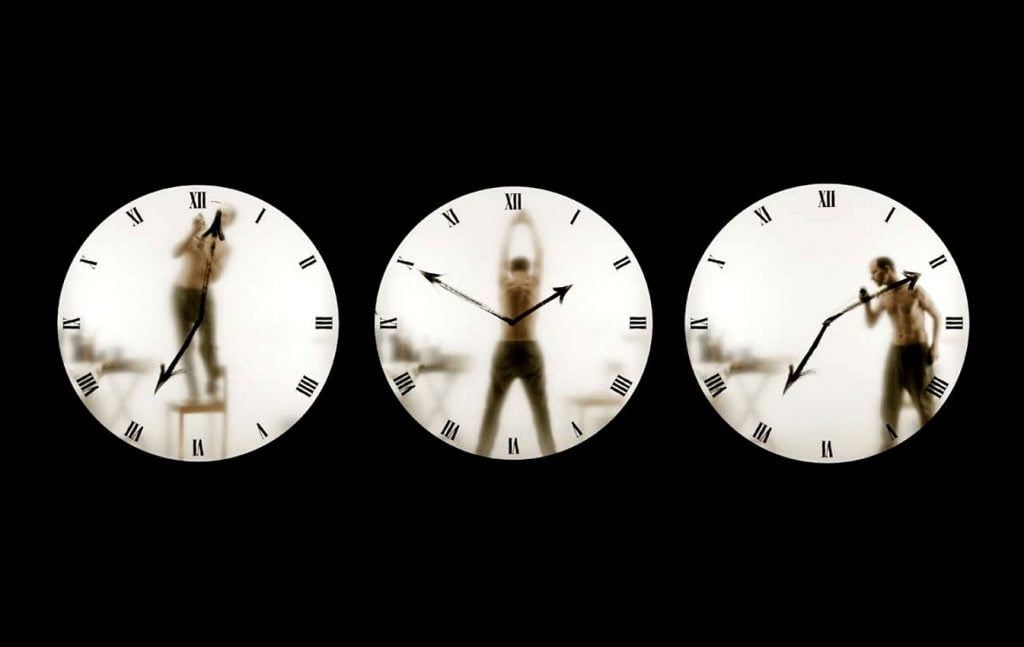
Maarten Baas, Real Time XL The Artist (2018). Courtesy of Carpenters Workshop Gallery.
If you could go back in time, what age would you go to? Also, what moment in history would you go to?
Actually, I’m very happy with any age that I have. I don’t have the desire to go back in time. Because I think every year is a new experience and it’s a new unique way of seeing life. This is because I time travel all the time, playing with childhood and different ages in my work. But if I really could go back in time, I would like to go back to primary school and discover things all over again. We used to live next to the beach and I would play hide-and-seek in the dunes, so I have good childhood memories. I would totally be into repeating that.
As for a time in history, I really would like to go to prehistoric times when nothing was there yet and humankind still had to find out how to evolve—like square one of humanity. I really like that idea.
Which of the pieces in “Play Time” took the longest to create?
There’s always a behind-the-scenes story to every work I make. In the end, it should look simple, but to make simple things is often very complicated. So yeah, a lot of works took a lot of time in the end. The series with the children was very intense because we recorded 720 children—to record them in the right way was quite a challenge. But we enjoyed it and it was a hilarious process.
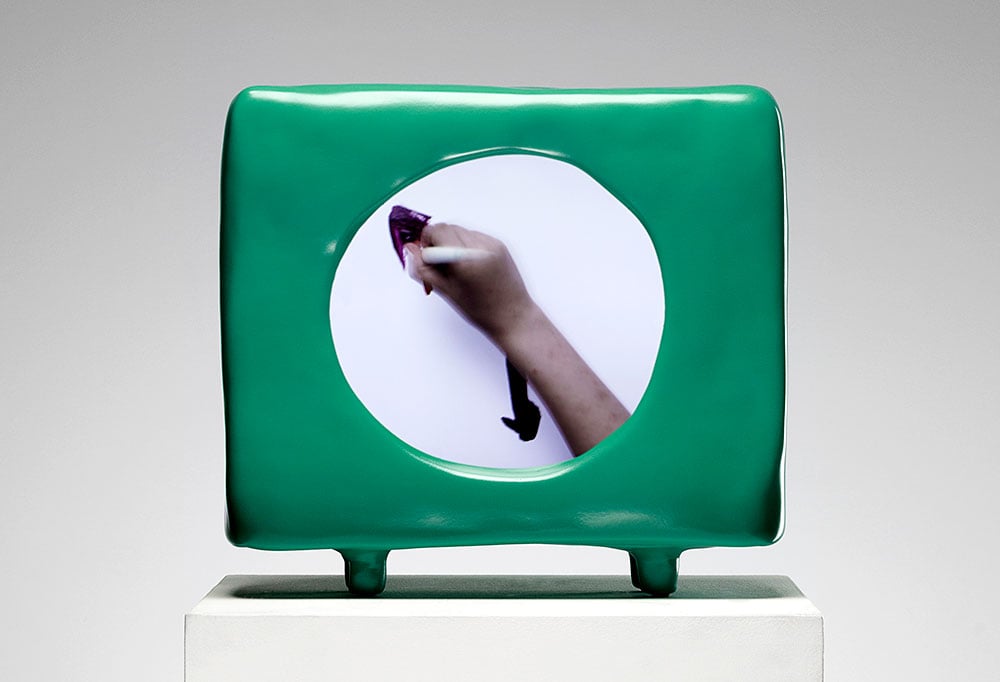
Maarten Baas, Children’s Clock (2022). Courtesy of Carpenters Workshop Gallery.
There is an expression that time stops in Los Angeles. Is that why you wanted to show there?
To be honest, I didn’t know about that expression. However, I think it fits very well here. The Hollywood industry is all about imagination and storytelling, and that’s exactly what I want to do in my work. I really want to go beyond making a static sculpture. I really want to tell a story. And that’s also what happens in the movie world. I’m very much triggered also by various disciplines [of art]. I combine the physical work with video and performance. So there’s certainly an element of acting and video art in my work. Therefore, I think it fits very well here in L.A.
Speaking of time, how do you feel about embarking on a “retrospective” that brings together previous exhibitions?
I really like how the pieces communicate with each other. That’s why it’s called “Play Time.” I’m trying to get myself into the energy of when I was four years old, having adventures without limitation and without worries—and taking that into the mature world. In that sense, I think the exhibition is curated in a nice way, because all the pieces have that element in it.
Do you think differently about brand commissions and personal work? How so?
If it’s a commission, then there’s often a brief and or at least a focus, and then there are some limitations. I like to work with those limitations. That’s why I’m originally from the design world—design has certain limitations within which you have to move. I’ve liked to play with limitations since I was young. I always tried to play within the rules. I think it takes creativity to bend the rules or to reinterpret them and to question them. And that’s what I really enjoy doing.

A work from Maarten Baas’s “Monster” series, available from Carpenters Workshop Gallery.
I really like to work on commissions for brands. I actually only do it if I really can turn it into a personal work, into something that I like doing as if it’s my own work. I don’t want to make a concession. Quite the contrary, actually, in almost all of my commissions, I make fun of the brand that commissioned me. I wonder if they ever regret working with me. For instance, the fashion brand Hermès commissioned me to do a window display for their flagship store in Shanghai. I made monsters that moved and had sharp teeth. With their sharp teeth, they would tear apart Hermès bags like they were eating them. That’s what the display was, a pile of torn Hermès bags in the window, and the monsters were already chasing the next one as if they had already digested the previous collection.
As we speak, I’m working on a new work for a brand that I can’t announce yet. It will be launched during Design Week in Milan. I have also played a bit with the brief they gave me.
Your works are widely collected. Aside from institutions, who are some of your private collectors?
There are many private collectors. I just went to the house of Michael Ovitz, who has a crazy big collection with big artworks. I’m very honored to be part of that. Another important one from quite a while ago is Adam Lindemann, who has this beautiful house in Uptown Manhattan. He collects my work as well. And besides that, of course, some museums and more private collectors who I’m not sure if I can mention their name. Also a lot of Hollywood actors. I like the fact that it’s picked up by actors. It’s nice because in a way I see my work as theater, as if I’m building a set design. But that theater is actually your living room or your house or where you actually are as an actual real person rather than an actor.
Are you a collector? If so, which artists or genres do you gravitate toward?
I collect work, yes, mostly young artists. I like to encourage artists to make work. I have various works. I have friends and colleagues who are artists or designers with whom I swap pieces. That happens a lot. I respect my fellow designers and artists. The most famous artwork I have is a Banksy. I think that must be the biggest or, let’s say the most expensive, one. In terms of what style I like, I always pick it intuitively, they don’t need to fit with each other. I don’t want to rationalize it too much. However, if I look at what my artwork is about, there is almost always an element of humor in it.
Also, text. I wasn’t aware of that before, but I like artwork in which text plays an important role. It could be just one line. Various artists that I collect play with words or they do something with text, but it’s always modern and concrete. It’s not abstract art—I don’t have much of that. It’s accessible and fun, with some lighthearted or fun element in it. Of course, I have a lot of my own work in my own house.
Maarten Baas, “Play Time,” Carpenters Workshop Gallery Los Angeles, 7070 Santa Monica Boulevard, CA 90038, February 14–May 26, 2023.
More Trending Stories:
Is Atlanta’s Art Scene Finally Achieving Critical Mass? There Are Big Signs That Point to ‘Yes’